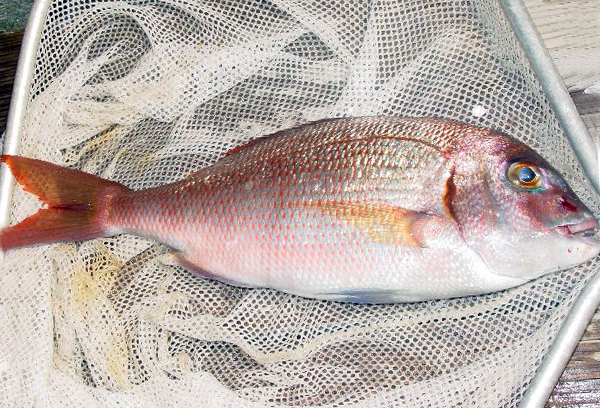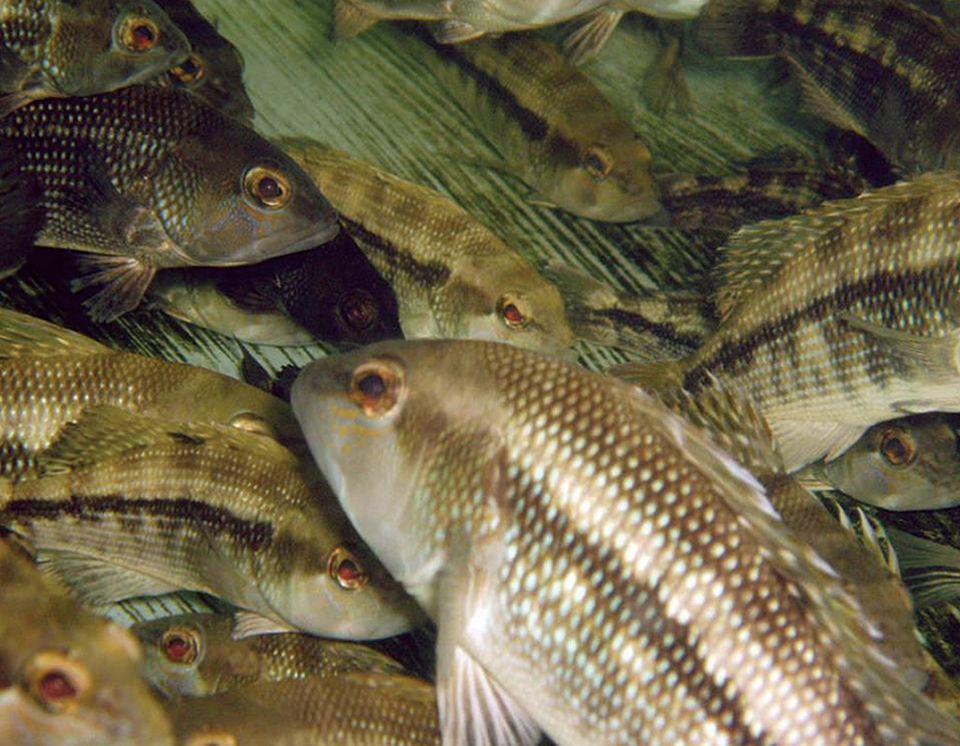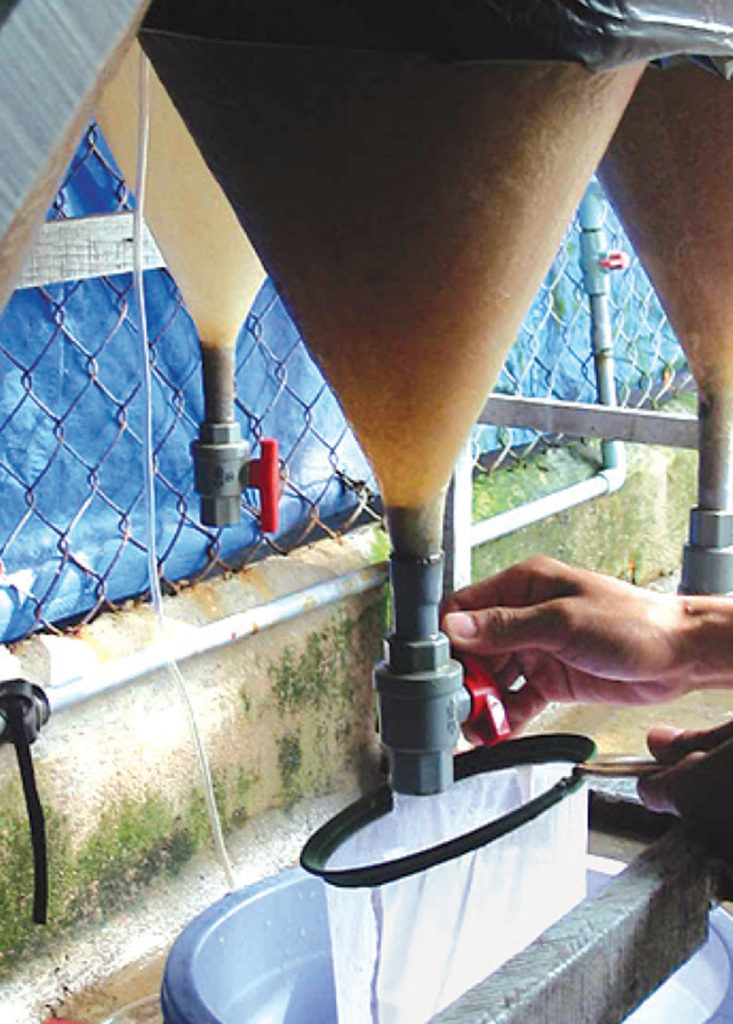Authors recommend diet stability and palatability assays

Production of live food for the rearing of larval marine fish constitutes a major operational cost and bottleneck in commercial marine fish culture. The variability and poor nutritional quality of live food are major concerns during production.
Research has been directed toward developing compound microdiets to replace live food to ameliorate this problem. Although extensive research has been performed during the last 25 years, studies to determine specific nutritional requirements such as amino acid and vitamin requirements are scarce and the formulation of adequate diets is still elusive.
Formulating complete diets
Larval performance on compound microdiets alone is, in general, inferior to that of live food. One question that arises from previous studies is whether the technological processes utilized to manufacture microdiets is adequate to emulate live food acceptability and digestibility. The authors recommend that diet research incorporate comprehensive evaluations that include diet stability and palatability assays, which are not usually performed for marine larvae diets.
Much work has been devoted to biological evaluation, such as bioassays that last longer than six weeks, but the only parameters evaluated in most feeding trials are growth and survival. The authors propose that several key parameters be investigated during the manufacturing of practical compound microdiets for first-feeding marine fish larvae.
Research process
The ideal compositions of compound microdiets are species-dependent, but common guidelines can be followed based on previous research (Table 1). The authors have modified the approach suggested by Yufera and coauthors in 2000, which included a three-step process: diet design, biological evaluation and digestibility evaluation. The following research strategy is proposed.
- Selection of ingredients.Use fresh by-products from marine organism processing plants (although they represent potential vectors for disease), fishmeal, and a protein hydrolyzate to provide intact proteins, peptides, and free amino acids, as well as highly unsaturated fatty acids (Table 2).
- Selection of binder/technology. Use a mixture of polysaccharides and proteins that are highly digestible. The application of combing fluidized bed dryer and microbound flake technology is suggested.
- Stability evaluation. Test the leaching rate of soluble protein, peptides, and/or amino acids. The authors evaluated soluble protein using a modified Bradford technique.
- Acceptability evaluation. Study ingestion rates with and without gentle aeration during five hours using larvae not fed for 24 hours. The authors evaluated animals at 16 days posthatch.
- In vitro digestibility. Compute using the following equation.
Relative protein digestibility = (Δ Abs.280CMD / Δ Abs.280Caseine) x 100
Medina-Reyna, Recommended nutrient levels for compound microdiets, Table 1
| Nutrient | g/100 g diet Minimum | g/100 g diet Maximum |
|---|---|---|
| Proteins | 50 | 65 |
| Free amino acids | 10 | |
| Peptides | 20 | |
| Intact protein | 30 | |
| Lipids | 10 | 20 |
| Triglycerides | 5 | |
| Phospholipids | 10 | |
| 22:6n-3 | 2 | |
| 20:5n-3 | 1 | |
| 20:4n-6 | 0.1 | |
| DHA:EPA | 2 | |
| EPE:ARA | 5 | 10 |
| HUFAs n-3 | 3 | 5 |
| Carbohydrates | 10 | |
| Fiber | 2 | |
| Ash | 10 | |
| Vitamins | 5 | |
| Ascorbic acid | 0.5 | |
| Minerals | 4 | |
| Attractants | 2 | 4 |
for marine fish larvae.
Medina-Reyna, Experimental diet formulation, Table 2
| Ingredient | g/100 g diet |
|---|---|
| Menhaden fishmeal | 49.4 |
| CPSP 90 | 14.8 |
| Skipjack muscle | 9.8 |
| Skipjack orbital oil | 14.8 |
| Cod liver oil | 4.9 |
| Carrageenan | 0.62 |
| Mesquite gum | 3.1 |
| Sodium alginate | 0.6 |
| Whey protein concentrate | 0.6 |
| Vitamin premix | 0.1 |
| Mineral premix | 0.2 |
| Proximate composition (%) | |
| Protein | 67.4 |
| Lipid | 21.3 |
| Dry matter | 93 |
Experimental diet tested
In a study that applied the above stategy, the authors selected several ingredients available locally and combined them with fishmeal to provide a nutritionally balanced diet for marine fish larvae. Although the 67 percent protein content seems high, previous experience has shown lower ingestion rates with microdiets. The level was chosen to satisfy requirements using a nutrient-dense approach.
A binder mixture enhanced the mechanical properties of the dough during the flaking process, but pieces of fishmeal were not hydrated satisfactorily or homogenized as fresh ingredients. The combination of these factors resulted in a diet that was easy to prepare.
Although the ingredients were finely ground to 10-20 μ to produce a microdiet of 250 μ, the soluble protein-leaching rate was a satisfactory 0.5 percent per hour. Leaching of other nutrients should be evaluated to provide a more comprehensive evaluation of diet stability. The relative protein digestibility of 80.4 percent seemed adequate, but should be confirmed using larval digestive enzymes and ultimately correlated with in vivo assays.
Acceptability tests with California halibut larvae were initially performed in tanks without aeration. The compound microdiet tended to sink quickly in less than 30 minutes. When gentle aeration was provided, ingestion rates significantly increased, with even higher rates in the presence of microalgae. The behavior of the diet in the water column must be evaluated and optimized prior to biological evaluation trials.
(Editor’s Note: This article was originally published in the August 2004 print edition of the Global Aquaculture Advocate.)
Now that you've reached the end of the article ...
… please consider supporting GSA’s mission to advance responsible seafood practices through education, advocacy and third-party assurances. The Advocate aims to document the evolution of responsible seafood practices and share the expansive knowledge of our vast network of contributors.
By becoming a Global Seafood Alliance member, you’re ensuring that all of the pre-competitive work we do through member benefits, resources and events can continue. Individual membership costs just $50 a year.
Not a GSA member? Join us.
Authors
-
Carlos E. Medina-Reyna, Ph.D.
Department of Aquaculture
Centro de Investigación Cientifíca y de Educación Superior de Ensenada
Km. 107 Carretera Tijuana-Ensenada
Código Postal 22860
Apdo. Postal 2732
Ensenada, B.C., México[120,109,46,101,115,101,99,105,99,64,97,110,105,100,101,109,99]
-
Juan P. Lazo, Ph.D.
Department of Aquaculture
Centro de Investigación Cientifíca y de Educación Superior de Ensenada
Km. 107 Carretera Tijuana-Ensenada
Código Postal 22860
Apdo. Postal 2732
Ensenada, B.C., México -
R. Pedroza-Islas, Ph.D.
Universidad Iberoamericana
Santa Fe, México D.F. México
Related Posts

Health & Welfare
Protein hydrolysates in larval fish nutrition
Protein hydrolysates are currently used as partial substitutes for fishmeal in high-quality artificial diets since their inclusion in feeds promotes growth and survival.

Health & Welfare
Atlantic red porgy aquaculture
With high value in U.S. markets and its overfished status, red porgy appears to be a viable candidate for aquaculture in North America.

Health & Welfare
UNC-Wilmington conducts research on black sea bass
Studies at UNC-Wilmington found that growth and survival of black sea bass larvae were improved through supplementation of DHA and ARA in live feed.

Aquafeeds
Artemia replacement diets for penaeid shrimp
At shrimp hatcheries, artemia replacement diets are used to replace live artemia, but complete replacement in commercial conditions remains a challenge.


